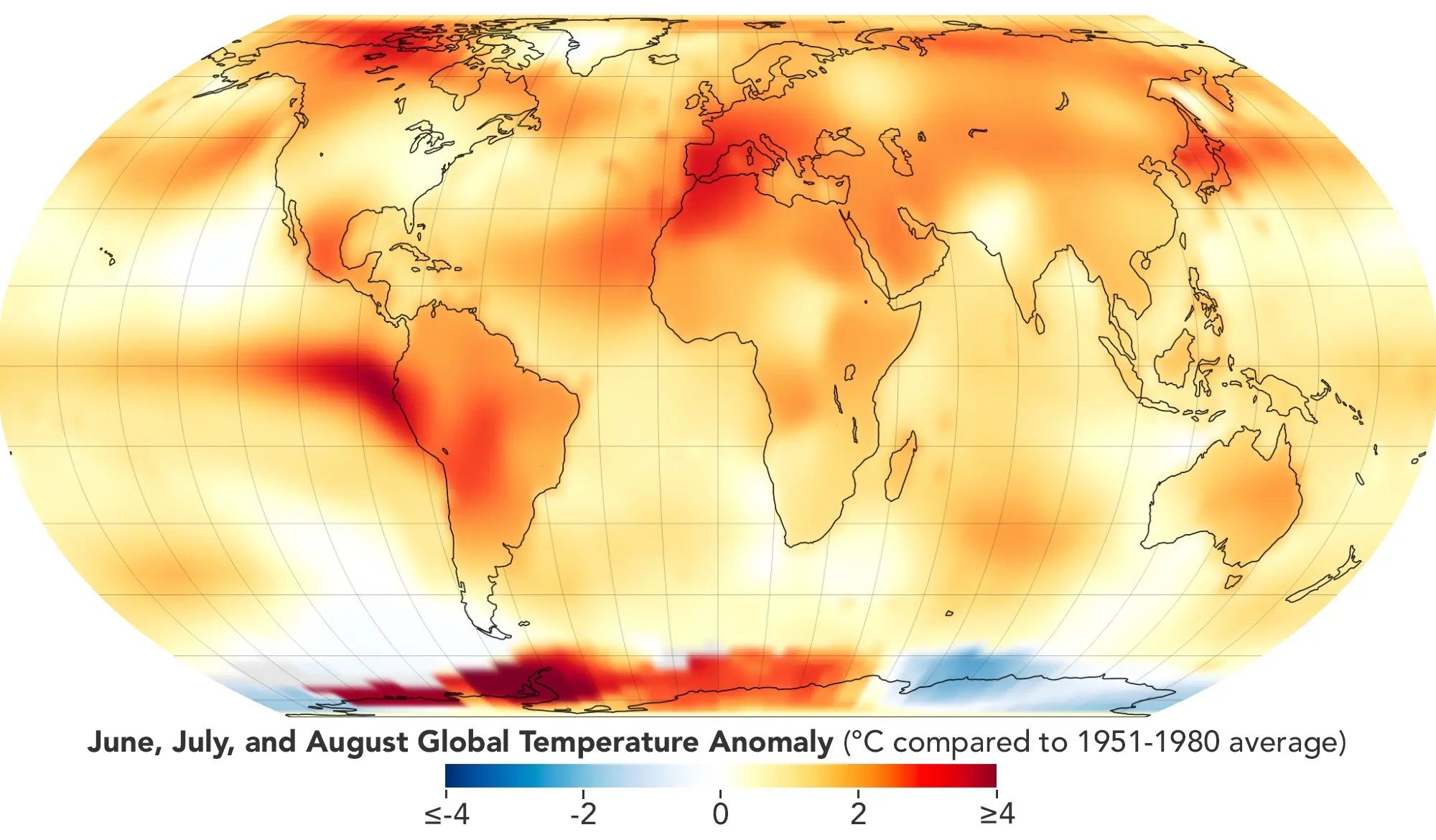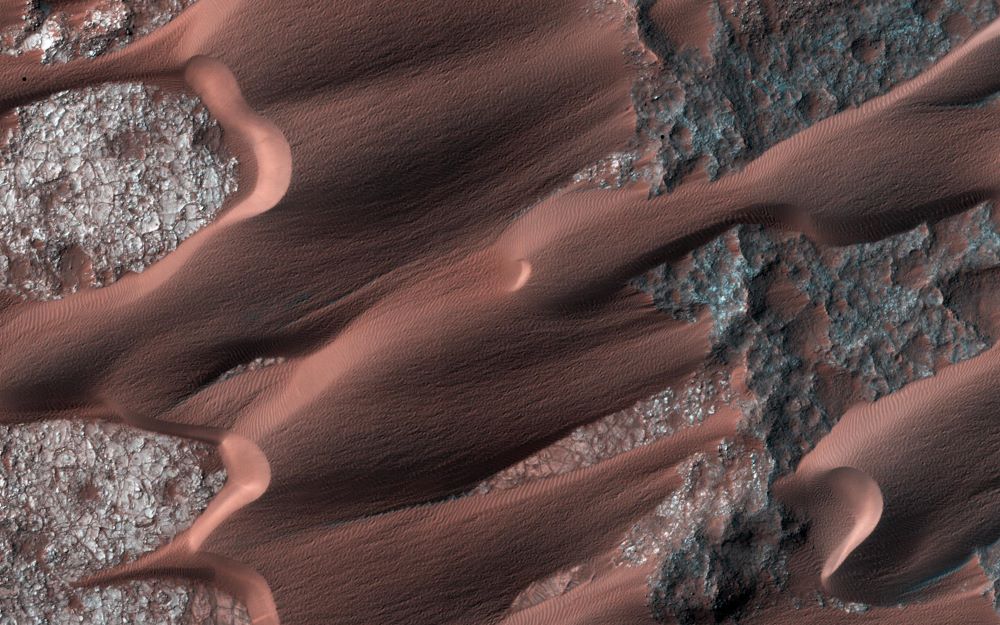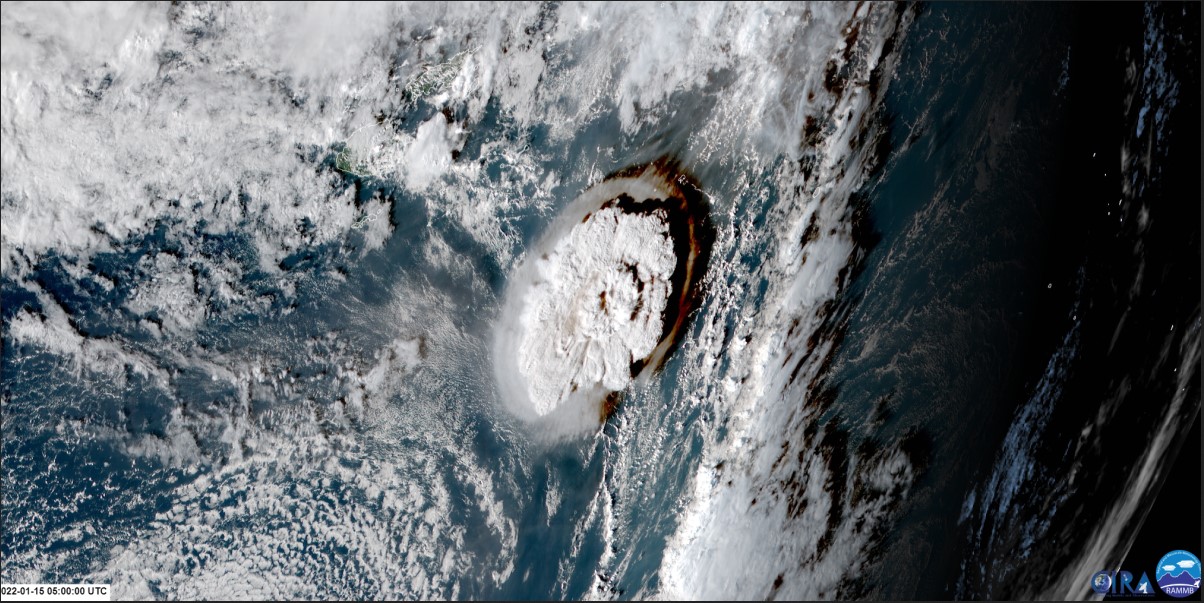On December 14th, at 12:02 PM Eastern (09:02 AM Pacific), the Sun unleashed a massive solar flare. According to the Space Weather Prediction Center, part of the National Oceanic Atmospheric Administration (NOAA), this was the strongest flare of Solar Cycle 25, which began in 2019 and will continue until 2030. What’s more, scientists at the SWPC estimate that this may be one of the most powerful solar flares recorded since 1755 when extensive recording of solar sunspot activity began.
Continue reading “We Just had the Strongest Solar Flare in the Current Solar Cycle”It Doesn't Take Much to Get a Runaway Greenhouse Effect
During the 1960s, the first robotic explorers began making flybys of Venus, including the Soviet Venera 1 and the Mariner 2 probes. These missions dispelled the popular myth that Venus was shrouded by dense rain clouds and had a tropical environment. Instead, these and subsequent missions revealed an extremely dense atmosphere predominantly composed of carbon dioxide. The few Venera landers that made it to the surface also confirmed that Venus is the hottest planet in the Solar System, with average temperatures of 464 °C (867 °F).
These findings drew attention to anthropogenic climate change and the possibility that something similar could happen on Earth. In a recent study, a team of astronomers from the University of Geneva (UNIGE) created the world’s first simulation of the entire greenhouse process that can turn a temperate planet suitable for Life into a hellish, hostile one. Their findings revealed that on Earth, a global average temperature rise of just a few tens of degrees (coupled with a slight rise in the Sun’s luminosity) would be sufficient to initiate this phenomenon and render our planet uninhabitable.
Continue reading “It Doesn't Take Much to Get a Runaway Greenhouse Effect”It Doesn’t Take Much to Get Tilted Planets

Chinese and Indian astronomers were the first to measure Earth’s axial tilt accurately, and they did it about 3,000 years ago. Their measurements were remarkably accurate: in 1120 BC, Chinese astronomers pegged the Earth’s axial tilt at 24 degrees. Now we know that all of the planets in the Solar System, with the exception of Mercury, have some tilt.
While astronomers have puzzled over why our Solar System’s planets are tilted, it turns out it’s rather normal.
Continue reading “It Doesn’t Take Much to Get Tilted Planets”The Combination of Oxygen and Methane Could Reveal the Presence of Life on Another World

In searching for life in the Universe, a field known as astrobiology, scientists rely on Earth as a template for biological and evolutionary processes. This includes searching for Earth analogs, rocky planets that orbit within their parent star’s habitable zone (HZ) and have atmospheres composed of nitrogen, oxygen, and carbon dioxide. However, Earth’s atmosphere has evolved considerably over time from a toxic plume of nitrogen, carbon dioxide, and traces of volcanic gas. Over time, the emergence of photosynthetic organisms caused a transition, leading to the atmosphere we see today.
The last 500 million years, known as the Phanerozoic Eon, have been particularly significant for the evolution of Earth’s atmosphere and terrestrial species. This period saw a significant rise in oxygen content and the emergence of animals, dinosaurs, and embryophyta (land plants). Unfortunately, the resulting transmission spectra are missing in our search for signs of life in exoplanet atmospheres. To address this gap, a team of Cornell researchers created a simulation of the atmosphere during the Phanerozoic Eon, which could have significant implications in the search for life on extrasolar planets.
Continue reading “The Combination of Oxygen and Methane Could Reveal the Presence of Life on Another World”OSIRIS-REx Returned Carbon and Water from Asteroid Bennu

Carbon and water are so common on Earth that they’re barely worth mentioning. But not if you’re a scientist. They know that carbon and water are life-enabling chemicals and are also links to the larger cosmos.
Initial results from OSIRIS-REx’s Bennu samples show the presence of both in the asteroid’s regolith. Now, eager scientists will begin to piece together how Bennu’s carbon, water, and other molecules fit into the puzzle of the Earth, the Sun, and even the entire Solar System and beyond.
Continue reading “OSIRIS-REx Returned Carbon and Water from Asteroid Bennu”If Earth is Average, We Should Find Extraterrestrial Life Within 60 Light-Years

In 1960, while preparing for the first meeting on the Search for Extraterrestrial Intelligence (SETI), legendary astronomer and SETI pioneer Dr. Frank Drake unveiled his probabilistic equation for estimating the number of possible civilizations in our galaxy – aka. The Drake Equation. A key parameter in this equation was ne, the number of planets in our galaxy capable of supporting life – aka. “habitable.” At the time, astronomers were not yet certain other stars had systems of planets. But thanks to missions like Kepler, 5523 exoplanets have been confirmed, and another 9,867 await confirmation!
Based on this data, astronomers have produced various estimates for the number of habitable planets in our galaxy – at least 100 billion, according to one estimate! In a recent study, Professor Piero Madau introduced a mathematical framework for calculating the population of habitable planets within 100 parsecs (326 light-years) of our Sun. Assuming Earth and the Solar System are representative of the norm, Madau calculated that this volume of space could contain as much as 11,000 Earth-sized terrestrial (aka. rocky) exoplanets that orbit within their stars’ habitable zones (HZs).
Continue reading “If Earth is Average, We Should Find Extraterrestrial Life Within 60 Light-Years”NASA Confirms That 2023 was the Hottest Summer on Record

Yesterday, NASA’s Goddard Institute of Space Studies (GISS) announced that the summer of 2003 was the hottest on record. This year saw a massive heat wave that swept across much of the world and was felt in South America, Japan, Europe, and the U.S. This exacerbated deadly wildfires in Canada and Hawaii (predominantly on the island of Maui) and are likely to have contributed to severe rainfall in Italy, Greece, and Central Europe. This is the latest in a string of record-setting summers that are the direct result of anthropogenic climate change.
Continue reading “NASA Confirms That 2023 was the Hottest Summer on Record”Interpreting Dune Patterns: Insights from Earth and Mars

A recent study published in the journal Geology attempts to interpret the patterns of dunes, which are sand mounds frequently formed by aeolian (wind) processes and range in size from small ripples observed on beaches to massive structures observed in the desert. Specifically, the researchers focused on patterns of dune crestlines, which are the top of the dunes. Different dune crestline patterns might appear as mundane features, but their formations are often the result of a myriad of influences, including climate change, surface processes, and atmospheric phenomena.
Continue reading “Interpreting Dune Patterns: Insights from Earth and Mars”The Most Intense Lightning Ever Seen Came From Last Year's Tonga Volcano Eruption
The enormous undersea volcano that erupted in Tonga last year was record-breaking in many regards. It generated the highest-ever recorded volcanic plume, it triggered a sonic boom that circled the globe twice, and was the most powerful natural explosion in more than a century.
Now, scientists studying the eruption say the volcanic plume created record-breaking amounts of volcanic lightning, the most intense lightning rates ever documented in Earth’s atmosphere. While the ash obscured the view, satellites and ground-based radio antennas with specialized instrument could peer through the ash and see every stage of the unfolding eruption. Over 200,000 lightning flashes were detected in the volcanic plume, more than 2,600 flashes every minute.
Continue reading “The Most Intense Lightning Ever Seen Came From Last Year's Tonga Volcano Eruption”Did Life Need Plate Tectonics to Emerge?

It’s widely accepted that Earth’s plate tectonics are a key factor in life’s emergence. Plate tectonics allows heat to move from the mantle to the crust and plays a critical role in cycling nutrients. They’re also a key part of the carbon cycle that moderates Earth’s temperature.
But new research suggests that there was no plate tectonic activity when life appeared sometime around 3.9 billion years ago. Does this have implications for our search for habitable worlds?
Continue reading “Did Life Need Plate Tectonics to Emerge?”


